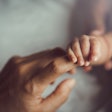
Do you provide sedation for your pediatric patients? If so, do you have the skills to rescue a child with apnea, laryngospasm, or airway obstruction? Can you perform successful bag/mask ventilation?
Being able to do so are some of the recommendations made as part of an updated practice guidance issued for dentists and physicians by the American Academy of Pediatrics (AAP) and the American Academy of Pediatric Dentistry (AAPD). The guidelines are published in Pediatrics (July 2016, Vol. 138:1, p. e20161212).
The updated guidelines also note the following:
- Those administering deep sedation must be able to perform tracheal intubation and cardiopulmonary resuscitation.
- The skilled observer for either moderate or deep sedation must be trained in pediatric advanced life support.
- The use of capnography is highly encouraged for children who are moderately sedated and required for those who are deeply sedated. Capnography is the measurement of inhaled and exhaled carbon dioxide concentrations, as recorded on a capnogram.
For the general practitioner, Stephen Wilson, DMD, PhD, emphasized that the revised guidelines focus on the provider recognizing and managing rescue interventions. Dr. Wilson and Charles Coté, MD, are the lead authors of the clinical report.
"The revised guidelines offer more references that are up-to-date and supportive of suggestions and recommendations," Dr. Wilson wrote in an email to DrBicuspid.com.
Emphasis on patient safety
The number of procedures that require sedation of pediatric patients has increased in both dental and medical offices; as a result, the AAP and AAPD sought to take the following steps:
 Stephen Wilson, DMD, PhD. Image courtesy of the AAPD.
Stephen Wilson, DMD, PhD. Image courtesy of the AAPD.- Unify the guidelines for sedation used by medical and dental practitioners
- Add clarifications regarding monitoring modalities, particularly regarding continuous expired carbon dioxide measurement
- Provide updated information from the medical and dental literature
- Suggest methods for further improvement in safety and outcomes
Dr. Wilson said changes in patient safety and new literature in areas such as monitoring were the driving forces behind the need to update the guidelines.
"It has been 10 years since the last guidelines were written, and significant changes have occurred in patient safety related to sedation," he said.
He said capnography was a key area in the guidelines.
"There is a focus on capnography as a standard for respiratory monitoring, and although other monitors (audibly amplified, nonamplified, and pretracheal stethoscopes) are recognized for moderate sedation, capnography is preferred for moderate sedation," he said. "Capnography is required for deep sedation."
“Capnography is required for deep sedation.”
SOAPME
The authors also re-emphasized the importance of following the steps in the acronym SOAPME when planning and preparing for procedures:
- S = Suction
- O = Oxygen; an adequate reserve supply
- A = Airway; size-appropriate equipment to manage a nonbreathing child
- P = Pharmacy; drugs needed to support life and appropriate reversal agents
- M = Monitors; size-appropriate oximeter probes and monitors as appropriate for the procedure
- E = Equipment; a defibrillator with appropriately sized pads
Dr. Wilson noted that AAPD emphasizes these principles in sedation courses.
Decision algorithms
The update also offers three algorithms or decision trees to guide the management of airway obstruction, laryngospasm, and apnea.
The decision trees are clearly designed and all include the reminder that calling for help is a necessary part of the process.
The authors emphasized that safe sedation for pediatric patients requires both a systematic approach and a willingness to learn advanced skills.
"Overall, the update is a victory for children who require procedural sedation," Drs. Coté and Wilson said in an AAP release. "Once individuals begin to use capnography, they will see great value in providing near-immediate recognition of respiratory compromise even before oxygen saturation changes."



















